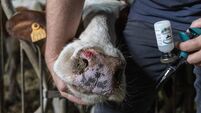Fresh semen tops
Their findings suggest the most rapid growth in the national herd would result from using fresh sexed semen rather than frozen-thawed sexed semen, or frozen-thawed conventional semen.
“The potential increase in availability of replacement heifers could be vital if we are to expand cow numbers in order to achieve the 50% increase in milk output targeted in Food Harvest 2020, the Department of Agriculture, Food and the Marine’s strategy for Irish agriculture,” said Dr Stephen Butler of the Animal and Grassland Innovation Programme, Moorepark, in a recent Todays Farm magazine report.













